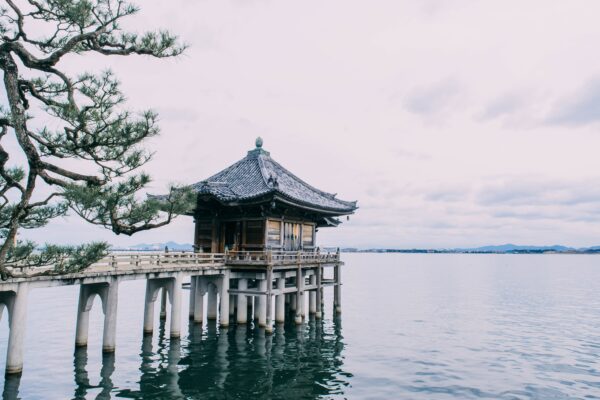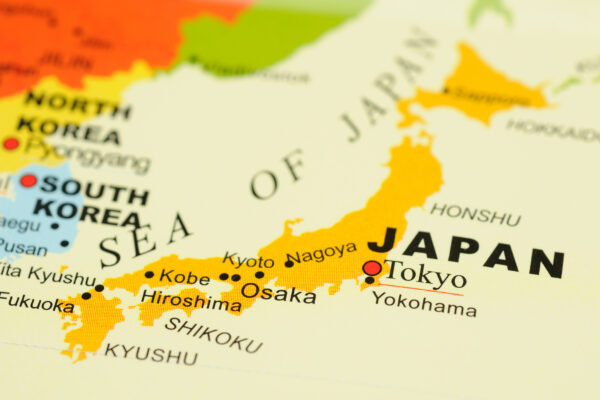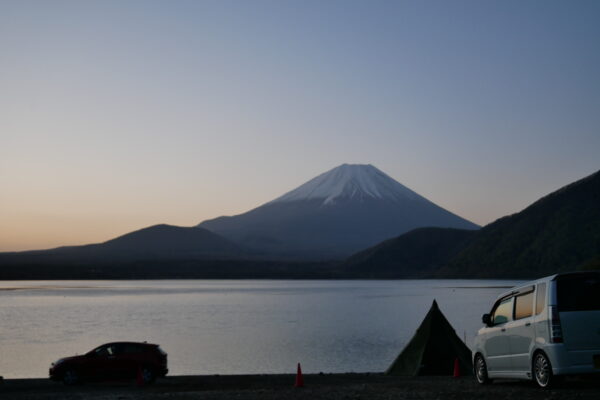
DAY 1
You’ll most likely spend your first day at the Dōshinomori Camping Grounds.
Around 100km west of Tokyo is a village called Dōshi, located in Yamanashi prefecture.
This village is surrounded by nature: lots of mountains, rivers, and waterfalls. There are also many different kinds of plants and animals that call Dōshi village home.
Here, you can experience all four seasons, and enjoy the beauty of each one. If the weather permits, hanging around and camping near the rivers is an option.
However, one tip is to avoid the weekends during the summer season; it’ll be extremely crowded. If you’re unsure about schedules, feel free to send us a message; we’ll be more than happy to plan your trip with you!

DAY 2
On the second day, it’s a good idea to go hiking.
As mentioned above, Dōshi is a village surrounded by nature. There are many different hiking courses; some can be completed in 30 minutes, while others can take 5 hours.
Yamanashi prefecture is also home to Mt. Fuji, Japan’s tallest mountain. Enjoy the beauty of nature and the grand view of Mt. Fuji on your hikes. Afterwards, take a dip in the hot springs at Dōsha. There are several hot springs within the village.
The Roadside Station: Dōshi village is near the camping grounds and the hiking courses. Roadside stations are a combination of parking lots and resting facilities. Inside the stations are restaurants and stores where you can buy souvenirs. In addition, we recommend you try the fresh vegetables that are picked nearby. When we say fresh, we mean fresh. After eating and shopping, you can relax in our campervan.


DAY 3
On the third day, after enjoy hiking, we recommend touring the Fuji Five Lakes region. The Fuji Five Lakes Region consists of (you guessed it,) five lakes: Yamanaka, Kawaguchi, Saiko, Shōji and Motosu. Lake Yamanaka is around 16km away from Dōshi village. Of the five lakes, Lake Yamanaka has the largest area: 6.57km2. You can relax here while taking a breathtaking look at one of the most scenic spots in Japan.

DAY 4
On day 4, Going 16km farther to the west will take you to Lake Kawaguchi. There’s another Roadside Station (Katsuyama) where you can take a break.
Otherwise, you can stop by at Fuji-Q Highland. Fuji-Q is an amusement park with over 10 thrilling rides. 6 of the rides located here hold Guinness World Records! There is a ride with a top speed of 172 km/h and a roller-coaster that has a 79m drop at an angle of 121°!
The best part of all this is probably the fact that you can see Mt. Fuji from the roller-coasters, which adds to the thrill.
And for those of you who are into the haunted mansions, Fuji-Q also has one; but beware, Japan takes haunted houses to a whole new level…


DAY 5
On day 5, go take a look at a cave that formed over 1,200 years ago!
The Fugaku Wind Cave and Narusawa Hyoketsu Ice Cave are caves formed by lava as a result of the eruption of Mt. Nagao, a side volcano of Mt. Fuji. The lava flowed in and hardened, creating a massive cave.
The average temperature inside is about 3℃, and is cool even in the summer. There’s natural ice inside the caves. It’s been said that a long time ago, people used this “natural refrigerator” to ship out precious ice to the Kanto region.
The overall shape of the cave depends mostly on how the lava entered as well as how it hardened.
Take a look inside and touch a piece of history in these marvelous caves.
Near the Fugaku Wind Cave and Narusawa Hyoketsu Ice Cave is Lake Saiko and its campgrounds. Here, you can enjoy activities like canoeing. Some parts of the lakeside campground have shallow waters where you can hang around while watching the big lake.


DAY 6
On the 6th day, camp at foot of the great Mt. Fuji!
An area known as Fumotoppara allows you to see a different Mt. Fuji in the morning, day, and night. It goes without saying, it’s a breathtaking view. The campgrounds here are very spacious and can be explored using segways and mountain bikes.

DAY 7
Try Unagi (eel) on day 7!
Go south about 60km from Fumotoppara to get to Mishima city in Shizuoka prefecture, an area where there are lots of restaurants serving eel dishes. It’s been said that the taste and flavor of eel depend almost entirely on the quality of the water. In other words, the place of origin isn’t the only factor that determines the quality; the water used is equally, if not more important than the origin of the eel. Mishima uses the springwater from Mt. Fuji. To put in another way, it uses the purest and highest quality water. It’s no wonder why Shizuoka is known for the best-tasting eels. Eels from Lake Hamana are carried over to Mishima live, where they are exposed to the springwater from Mt. Fuji for about a week. During this week, the water cleans the dirt and other debris on the stomach of the eel, eliminates any unnecessary fat, and even eliminates the odor.
Eel is served across Japan, but if you’re in Mishima, the local eels are definitely worth a try.

Afterwards, you can return to Tokyo to tour the city, or use our campervan to go on other road trips!
As usual, if you have any questions, please don’t hesitate to contact us!




